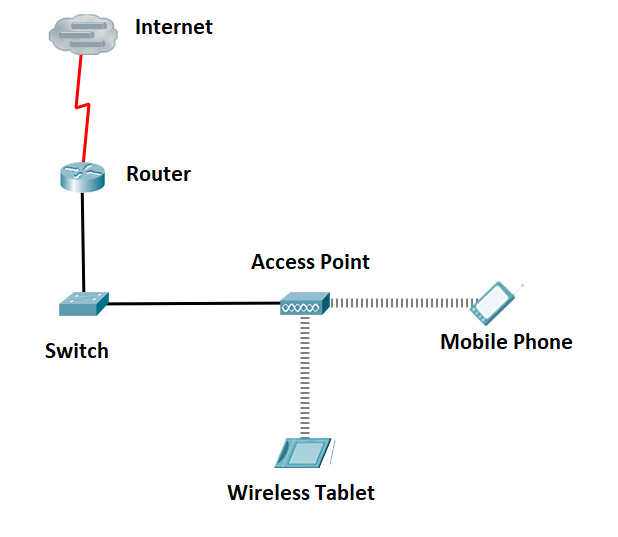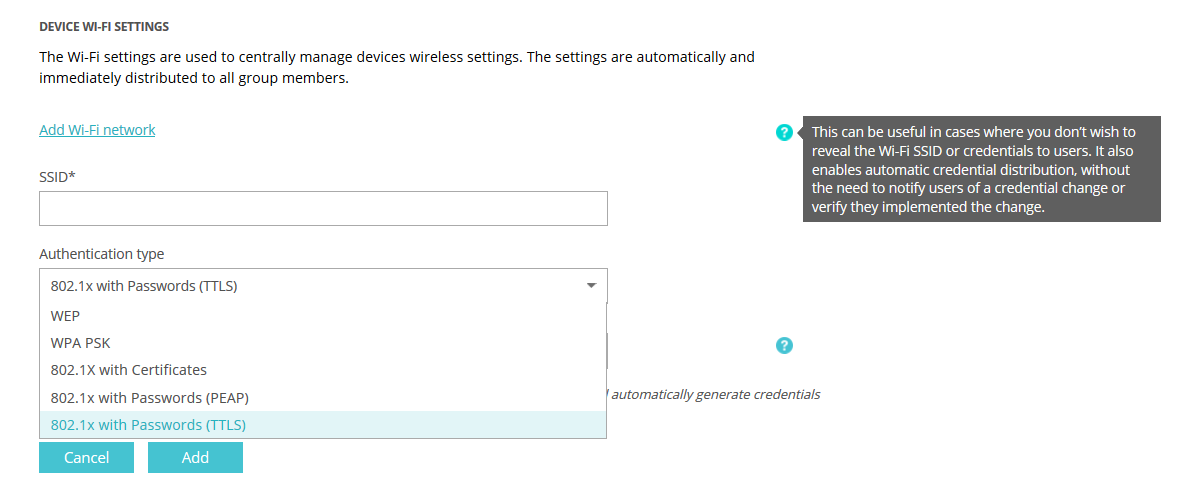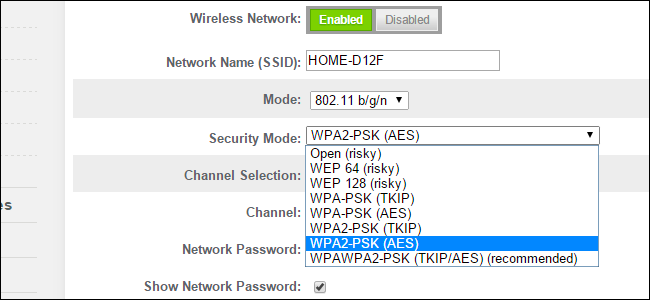

WPA2-PSK uses a passphrase to authenticate and generate the initial data encryption keys. WPA2-PSK gets higher speed because it is usually implemented through hardware, while WPA-PSK is usually implemented through software. It is advertised to be theoretically indecipherable due to the greater degree of randomness in encryption keys that it generates. WPA-PSK uses Temporal Key Integrity Protocol (TKIP) data encryption, implements most of the IEEE 802.11i standard, and is designed to work with all wireless network interface cards, but not all wireless access points. Then it dynamically varies the encryption key. This option uses a passphrase to perform the authentication and generate the initial data encryption keys. WPA-PSK uses a much stronger encryption algorithm than WEP so it is harder to decode.

This seal means the product is authorized by the Wi-Fi Alliance ( ) because it complies with the worldwide single standard for high-speed wireless local area networking. WPA encryption is built into all hardware that has the Wi-Fi-certified seal. The Wi-Fi alliance highly recommends against using WEP and plans to make it obsolete. Use this mode only, when you have a very old legacy wireless client that does not support WPA-PSK. WEP uses an old encryption method and can be easily decoded with today’s powerful computers. For product specific answers see Troubleshooting Wireless Networks It also is vulnerable to “denial of service attacks”.WEP and WPA, are standards for encrypting data that is transmitted over wireless (WiFi) networks, to prevent eavesdropping. It has greater performance overhead then WEP. It is incompatible with older operating systems.
WEP VS WPA PERSONAL UPGRADE
Older firmware will not upgrade to support it. It’s also backwards compatible with WEP devices & it integrates with RADIUS servers for administration, auditing, and logging.Ĭons of WPA This setup is more complicated and is unsuitable for most home users. It also adds authentication to a WEP basic encryption. Pros of WPA It provides extremely strong wireless security.

The encryption and decryption are slower for devices using software, rather than dedicated WPA hardware. Since WPA adds to packet size, transmission takes longer. To run WPA between two computers both must have WPA software. To use WPA, all computers, access points, and wireless adapters must have WPA software. The enhanced WPA2 uses Advanced Encryption Standard (AES) instead of Temporal Key Integrity Protocol (TKIP) to provide stronger encryption mechanism. In the Enterprise mode, which is more difficult to configure, the 802.1 x RADIUS servers and an Extensible Authentication Protocol (EAP) are used for authentication. In the Personal mode, a pre-shared key or passphrase is used for authentication. WPA operates in either WPA-PSK mode (aka Pre-Shared Key or WPA-Personal) or WPA-802.1x mode (aka RADIUS or WPA-Enterprise). All computers, access points, and wireless adapters must use the same. WPA-PSK is not much more difficult to configure than the older WEP, but is not available on some older products. Most wireless networks should use either WEP or WPA. WPA WPA is a wireless security encryption with greater protection than WEP. The 128-bit increases the size of the data over the network which does slowly decrease performance. While there is no cost to performance there is a cost to transmitting the extra key over the network. The first for example is that it is very easy to crack. WEP Cons There are many more cons the pros when it comes to WEP. Another good thing is that there is no extra performance cost to encrypting the longer 128-bit key.

WEP VS WPA PERSONAL PRO
The biggest pro is that it is easier to configure than the other encryption methods. WEP is not necessary if you are using a wireless network only for a gaming console such as a playstation or an xbox with no computers. WEP has 3 settings: off (no security), 64-bit (weak), and 128-bit (better). WEP was an early attempt at securing wireless networks but now there are better ways. WEP is a security protocol that encrypts transmitted data in a wireless network. WEP is part of the IEEE 802.11 wireless networking standard.


 0 kommentar(er)
0 kommentar(er)
